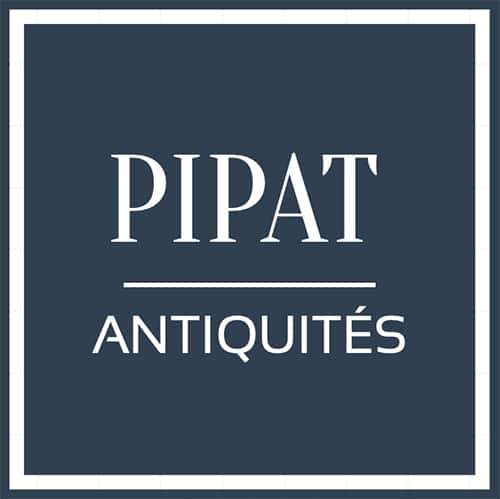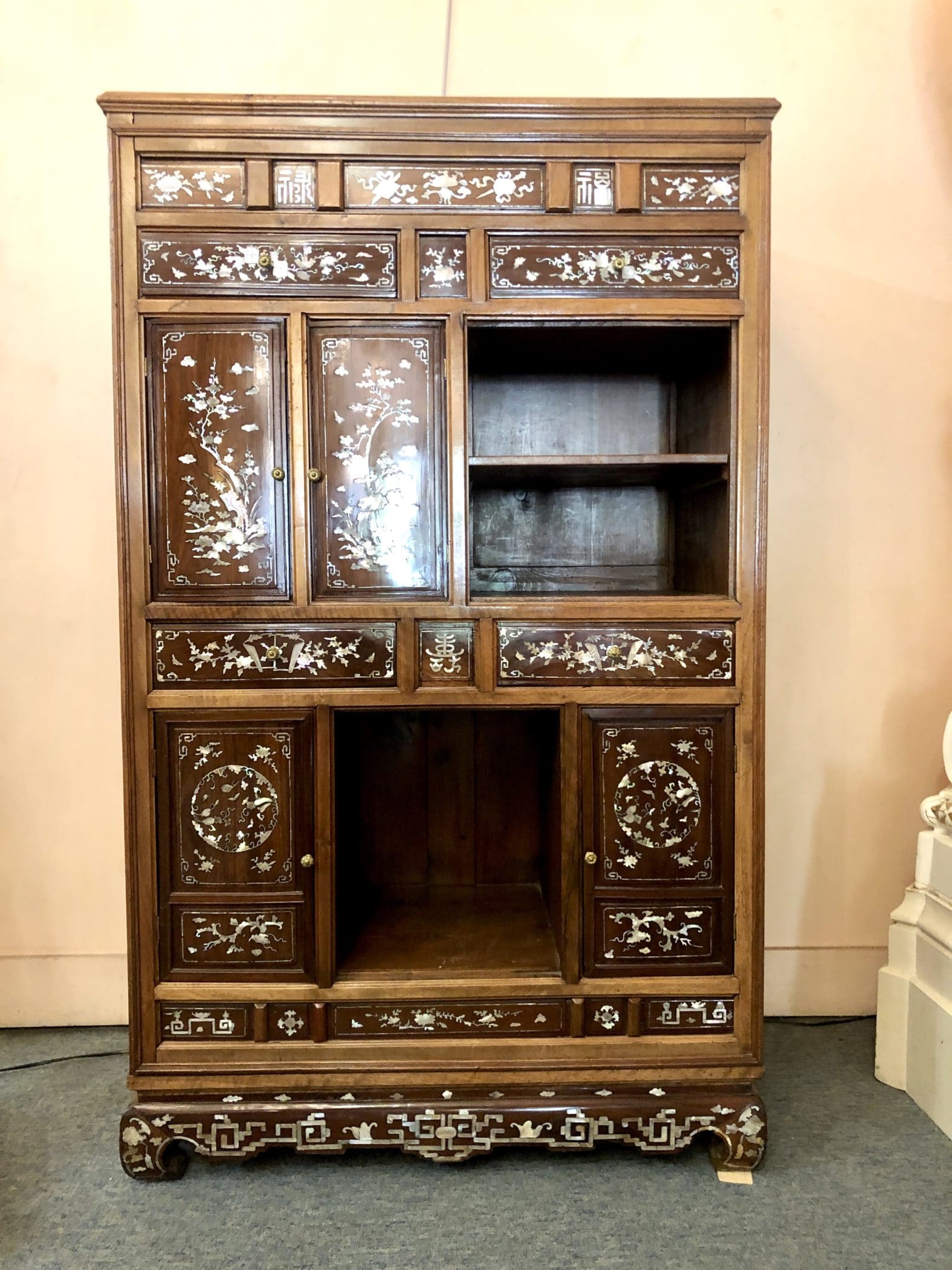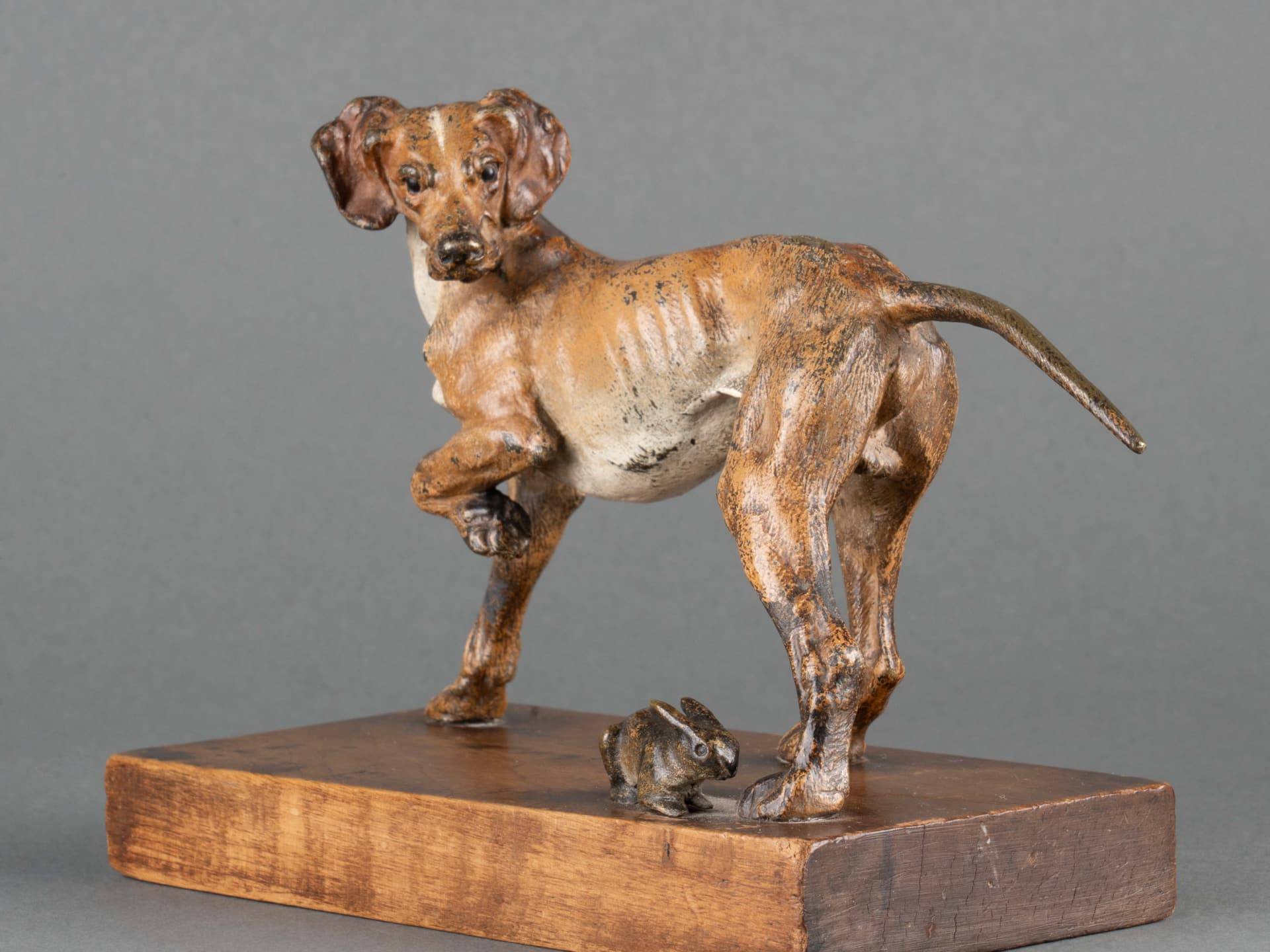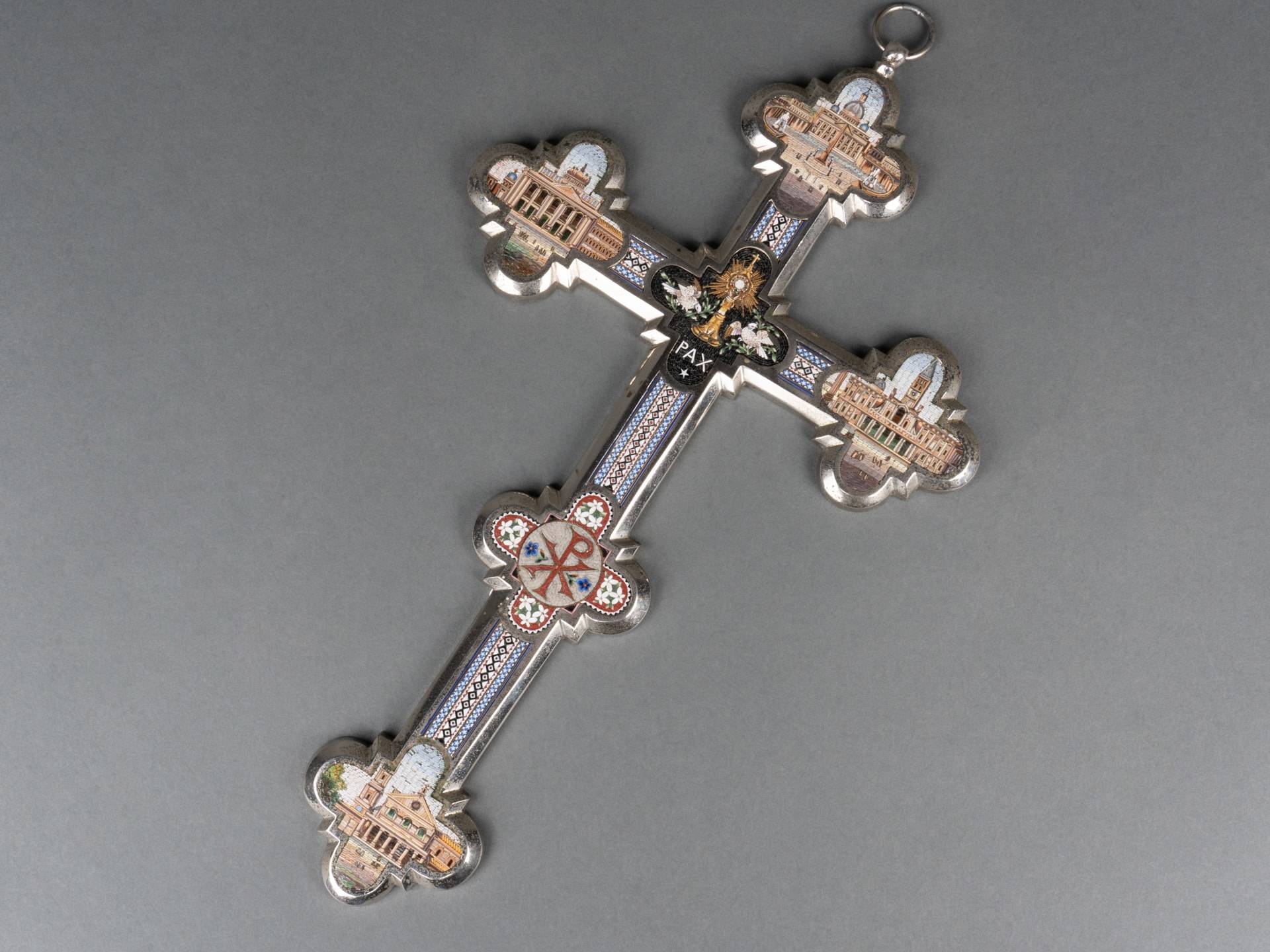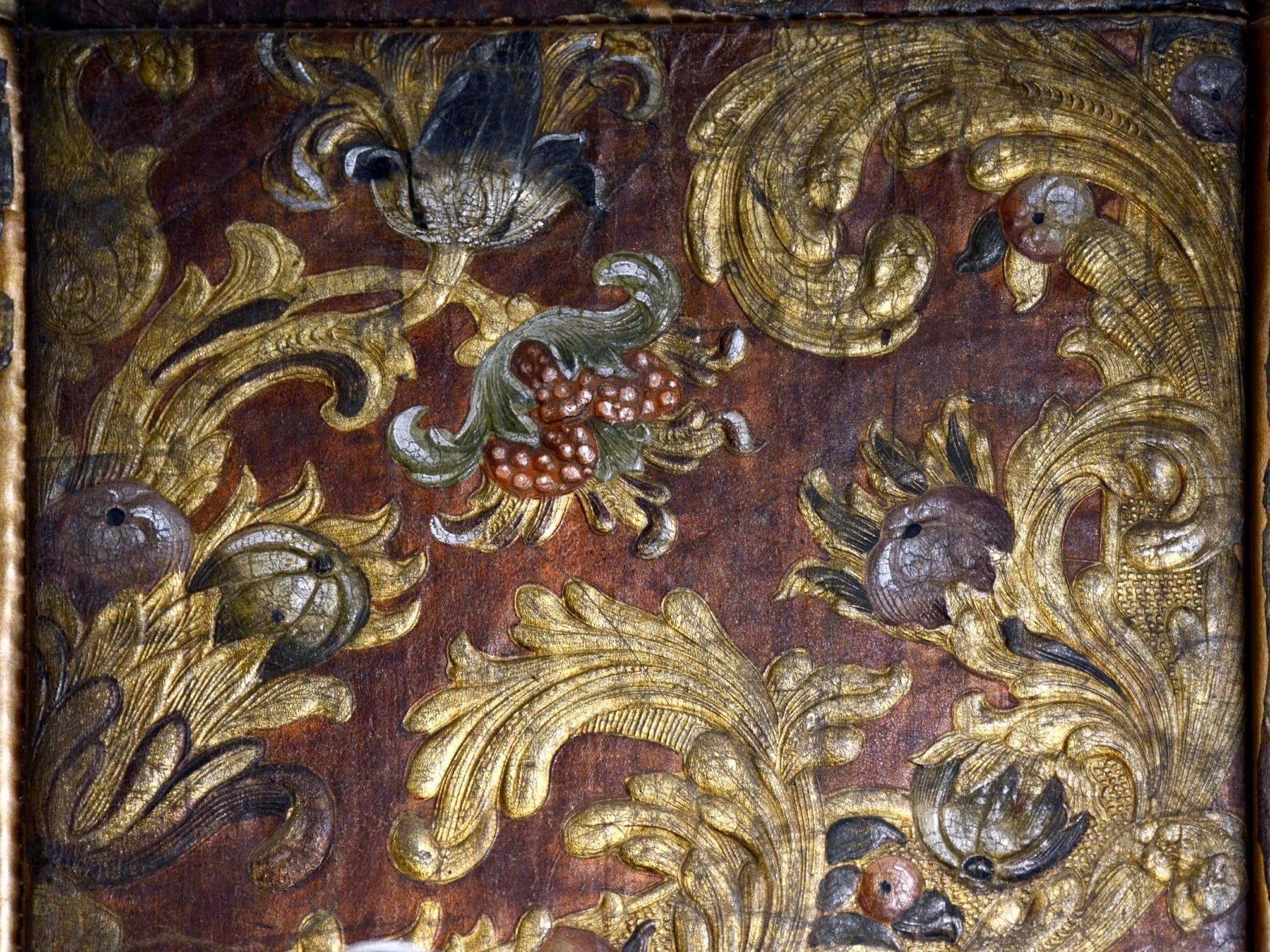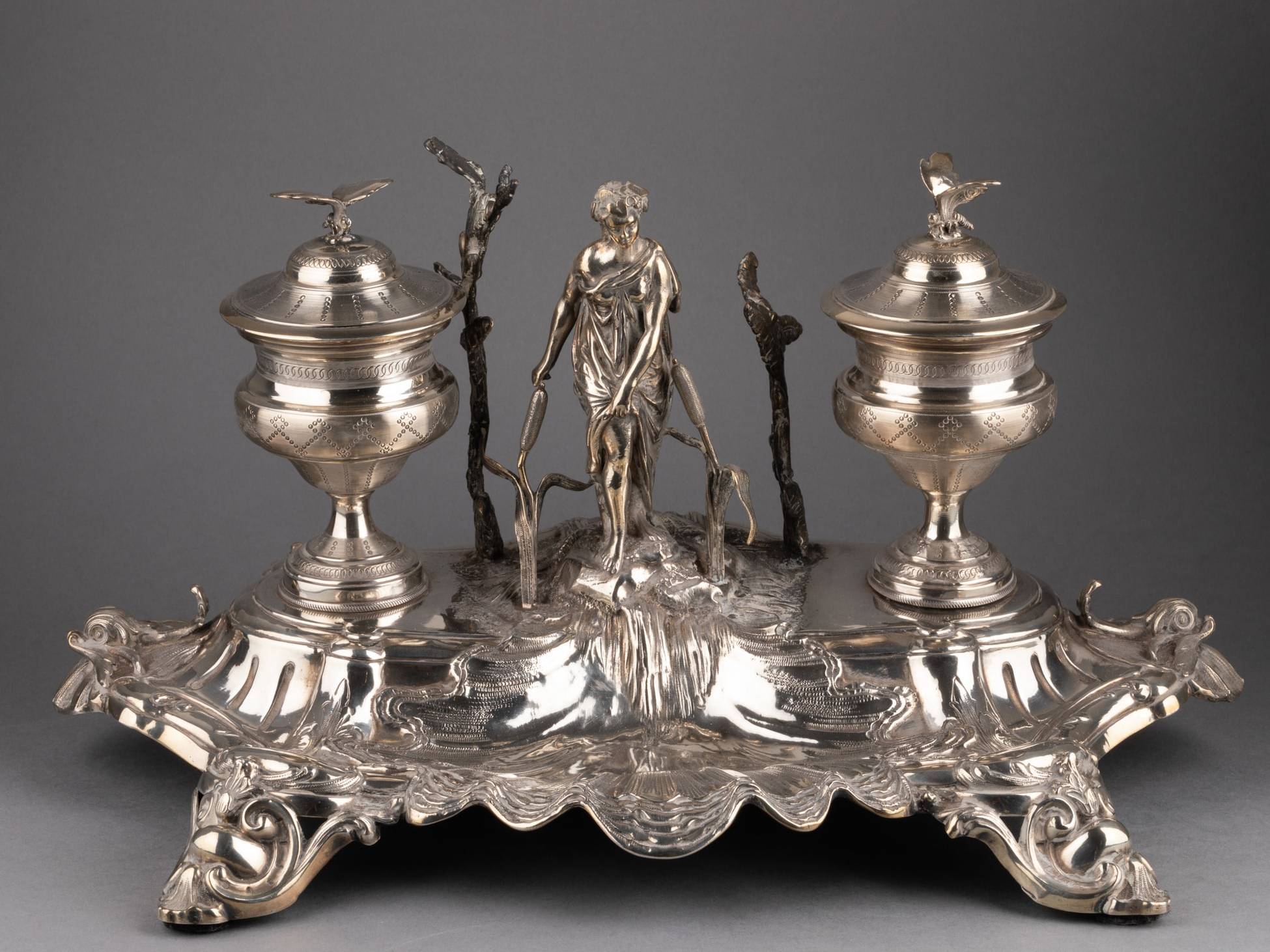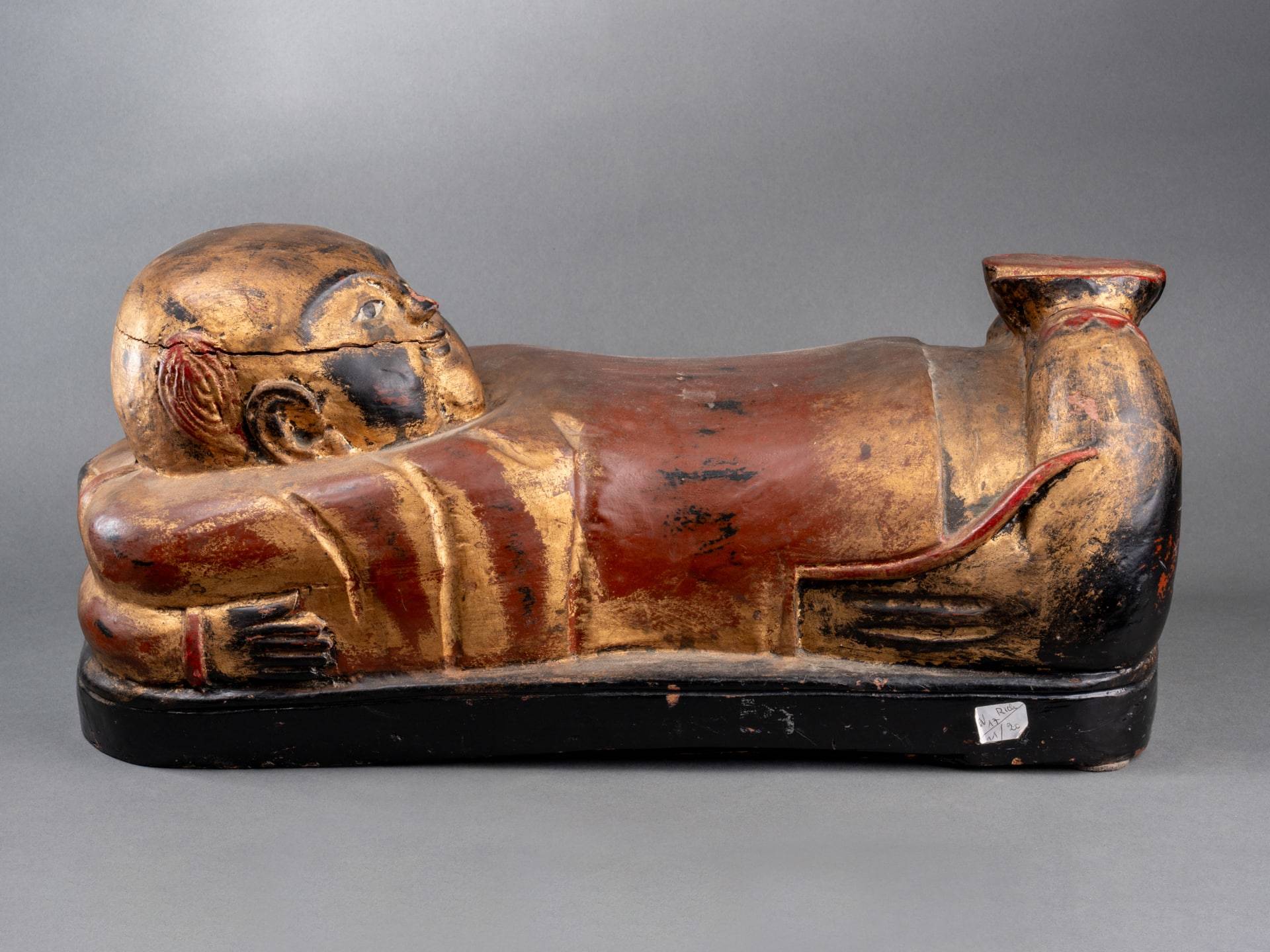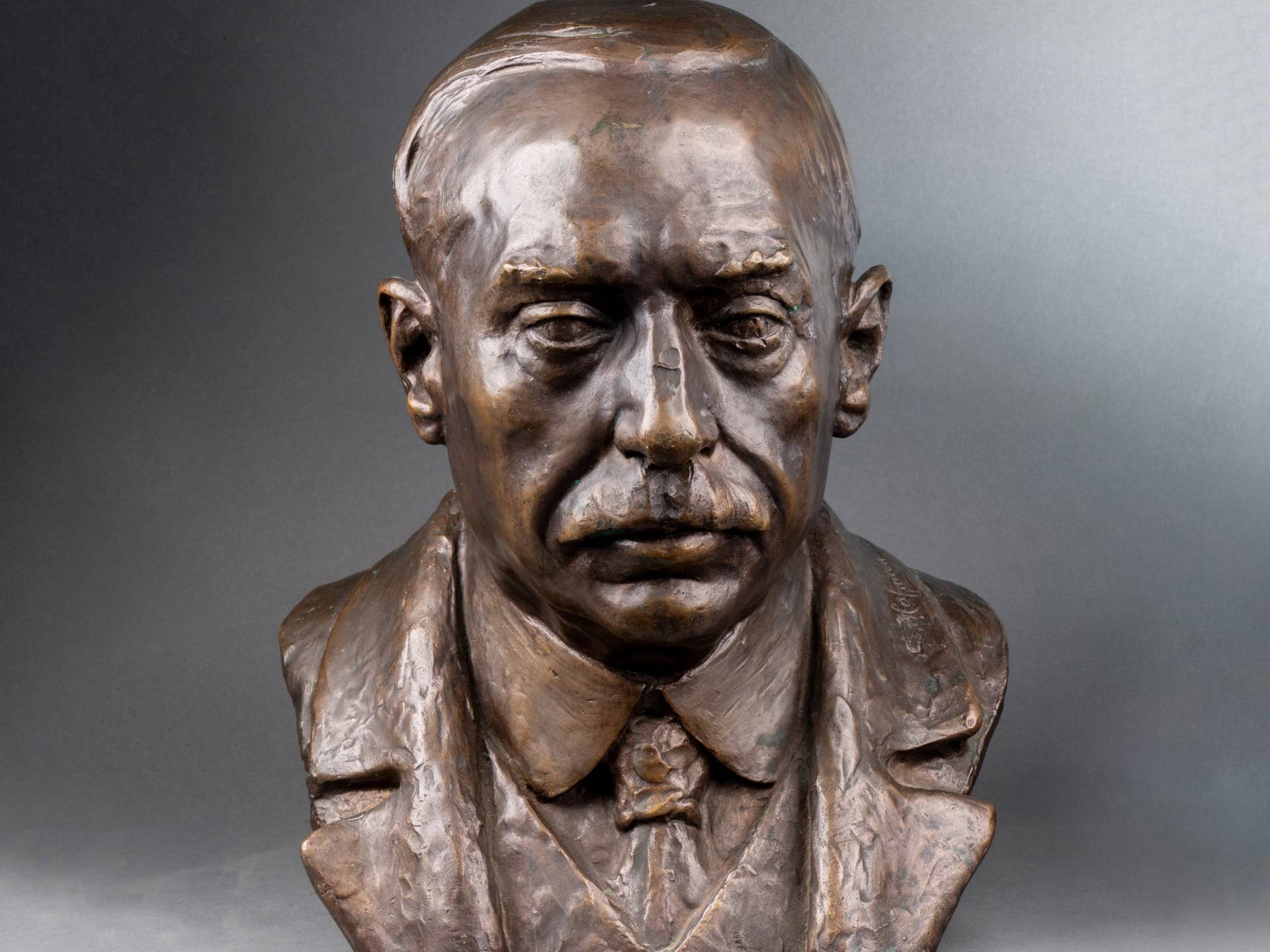Just like our European furniture, Chinese furniture comes in several categories, even within the high-end furniture. In the case of furniture made of precious wood inlaid with mother-of-pearl, it is appropriate to refer to it as luo-tien.
Mahogany: the Lucky Replacement for the Chinese Zitan
Chinese cabinetmakers regularly inlay mother-of-pearl motifs with finesse on this type of luo-tien mahogany furniture. Traditionally, sponsors prefer auspicious patterns, which is what we can see on our piece of furniture.
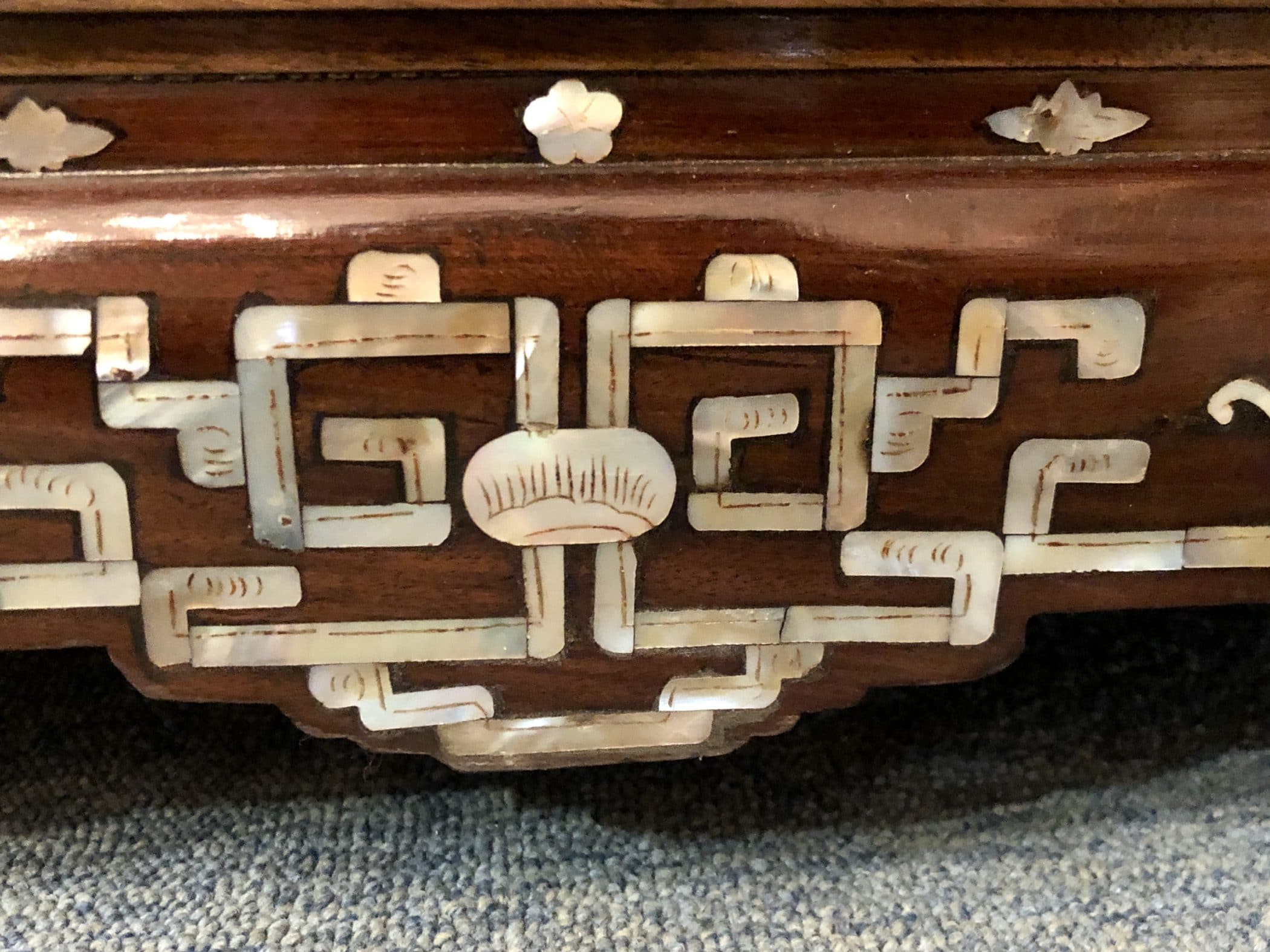
The first two ideograms on the upper belt of this cabinet designate Lù and Fú, two of the characters who accompany Shòu. Together, they embody the Three Stars of Happiness and are particularly lavish with good fortune.

禄 Lù: depicted as a mandarin, he wears a long blue or green coat, a hat and holds a scroll in his hand. He is often surrounded by children and by homonymy is sometimes replaced by a stag. It is the star of emoluments, official dignities, honors and pecuniary benefits.
福 Fú: depicted as a dignified official, he is dressed in a long red and gold coat and wears the hat assimilated to his status. He often holds a gold or silver ingot in his hands. By homonymy, he is sometimes replaced by a bat. It is the star of prosperity and good fortune.
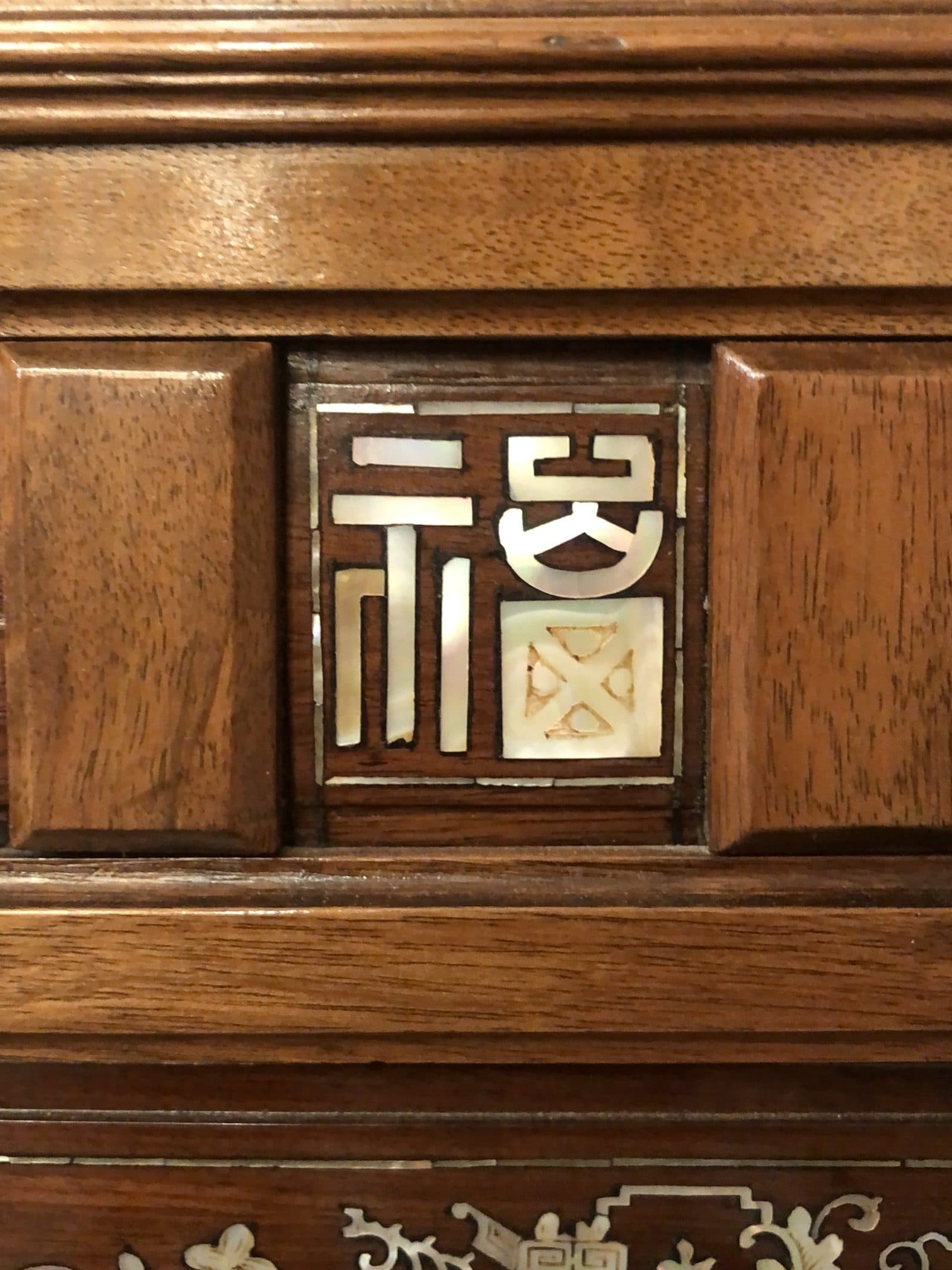
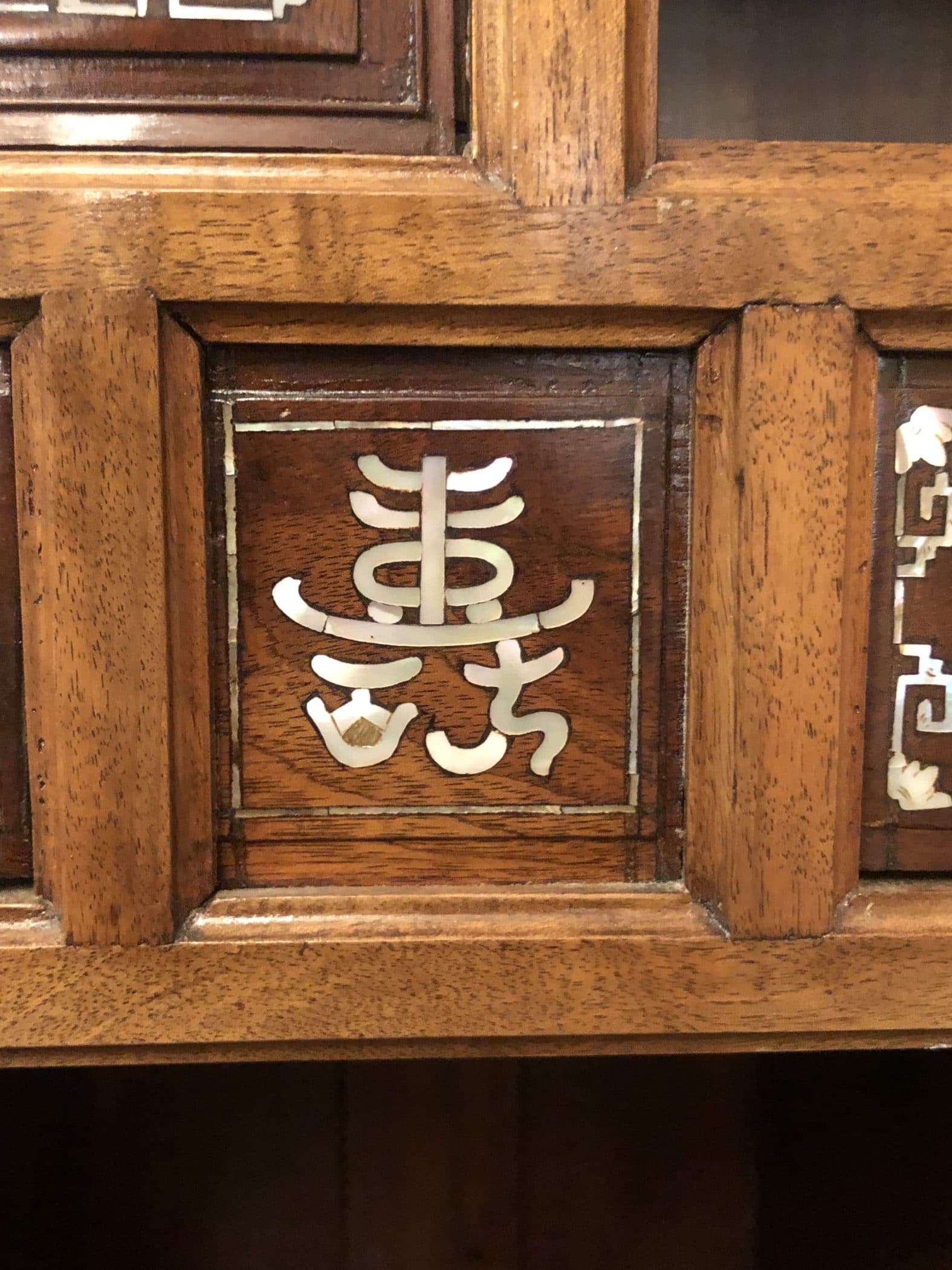
壽Shòu: On the middle belt is the ideogram designating the third Star of Happiness, Shòu the star of prosperity. It is by far the most important of the three, hence his special place on our cabinet. Shòu is a very ancient Chinese stellar deity.
It is the only one not inspired by a historical character and it is this seniority that gives him a privileged place. He is the Star of Longevity, recognizable by his long coat with wide sleeves, his bald and bulging head and his long white moustache. In his left hand he holds a long stick with a twisted end and in his right hand a peach of immortality. By homonymy, he is sometimes replaced by a pine.
Near the names of these three characters, the mother-of-pearl inlay shows their attributes. The hu de Lù, a ceremonial tablet that was traditionally held in front of the torso of officials when they approached the emperor. The ruyi (a kind of sceptre) and the ingot are the attributes of Fú. The tablets represented on the drawers are probably those on which Shòu writes the dates of life and death of each human being.

On the doors, spring symbols announce the arrival of this season of nature’s renewal and prodigality, while the branches of prunus in bloom are an auspicious symbol.
The butterflies present in several places of the furniture are a symbol of joy appearing with the summer. Often flying in couples, the butterfly is one of the Chinese emblems of marital fidelity.
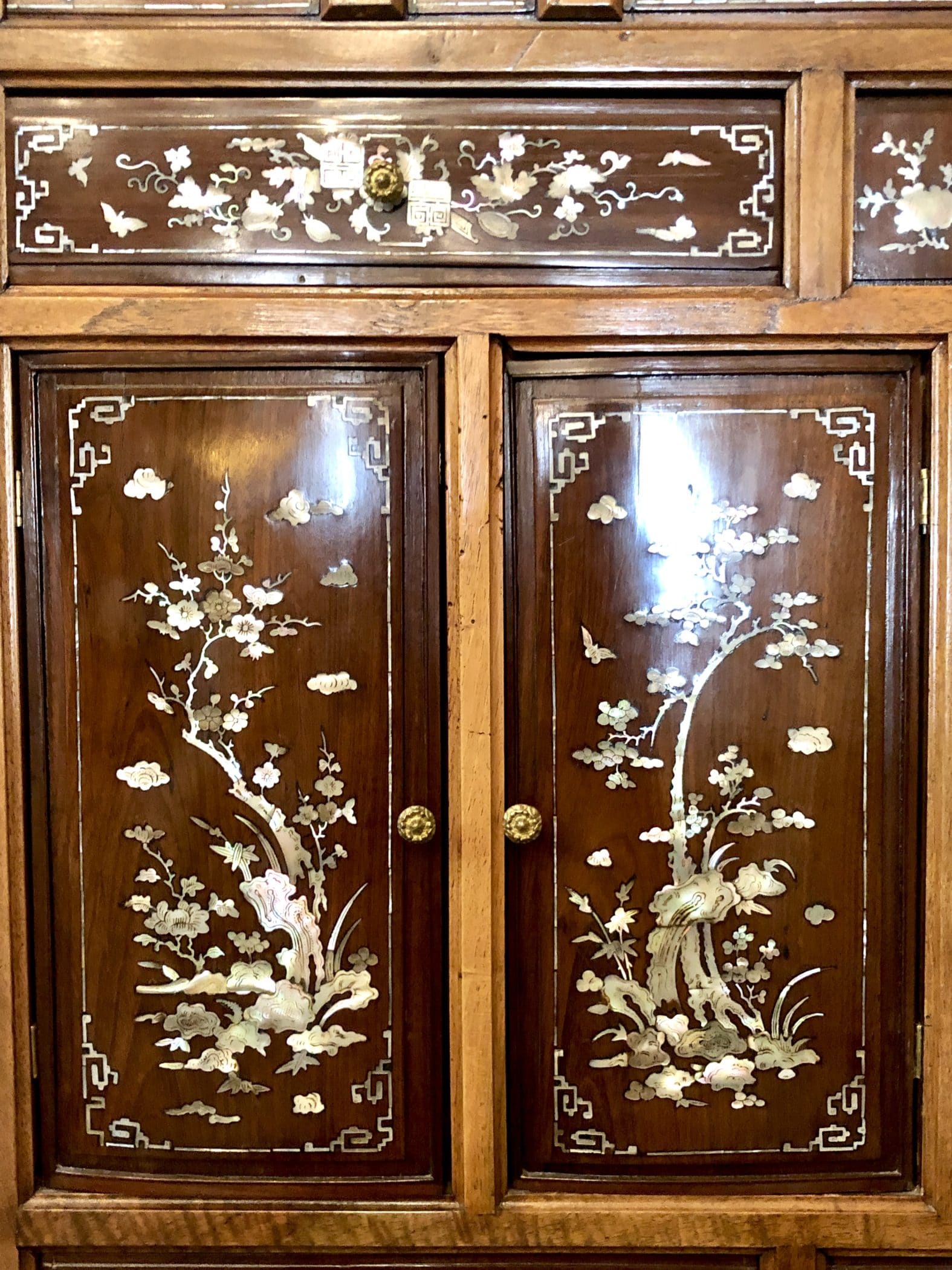
Finally, the bat – “fú” in Chinese – is a homonym of Fú, the Star of Prosperity and Good Fortune. It indirectly inherits the supposed virtues of its namesake and embodies luck in Chinese cultures.
This piece of Chinese or Chinese-influenced furniture, which has come down to us in perfect condition with no missing marquetry, was used as a small storage unit, perhaps for an elegant room in which the tea or incense ceremony was held. Was it brought back to satisfy the Japanese craze in Europe? At that time, this craze still awkwardly mixed the productions of these two neighboring countries… In any case, the essence of mahogany and the Chinese cabinet makers practices leave no doubt about the dating of this piece of furniture from the second half of the 19th century.
Marielle Brie
Art Historian for Art Market and Cultural Media
Author of the blog Objets d’Art et d’Histoire
Autres ressources et documentations
27 April 2024
Vienna Bronzes
Collectible objects since their creation, Vienna bronzes play the role of accumulation in bourgeois interiors. They are charming manifestations of the social success of their…
29 March 2024
A Micro-mosaic Grand Tour Cross
An emblematic art of the Grand Tour, micro-mosaics rival painting in its most refined productions.
19 March 2024
The Cordoba Leather or Gilded Leather
This famous leather gave its letters of nobility to Spanish production drawing generously on oriental know-how known since Antiquity.
6 February 2024
A Solid Silver Inkwell, 1860 – 1890
This solid silver inkwell is a true sculpture in itself.
4 December 2023
Chinese Opium Den Pillow, 19th Century
A surprising object to our Western eyes, Chinese rigid pillows have long been preferred to their fabric counterparts.
22 November 2023
Georges Clémenceau (1841 – 1929) Bust
A major politician and major cultural figure, Georges Clémenceau encounters both the First World War and the representatives of an art freed from the codes of the Academy.
